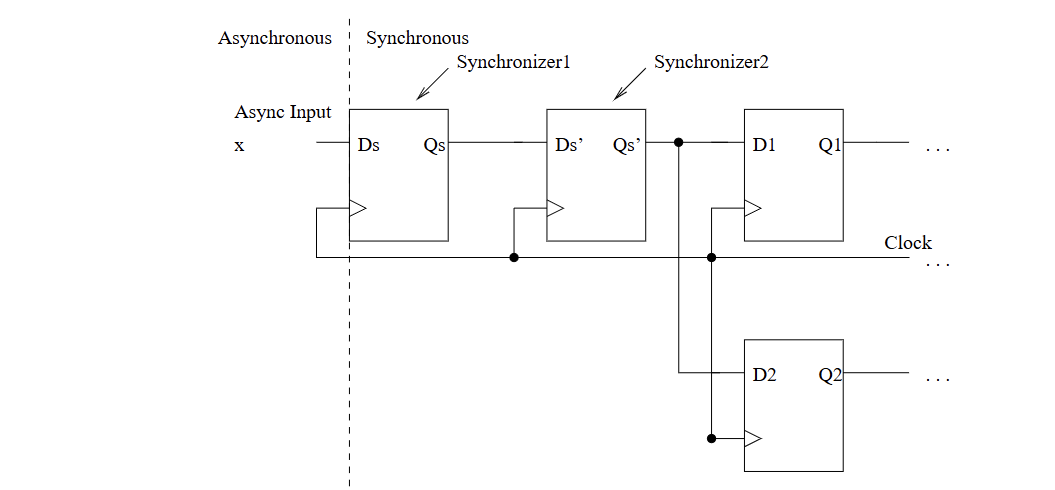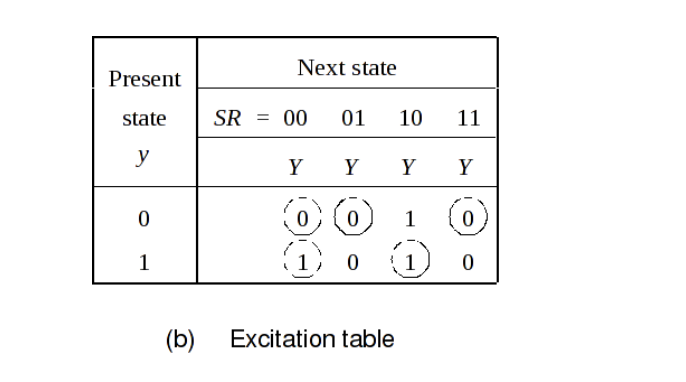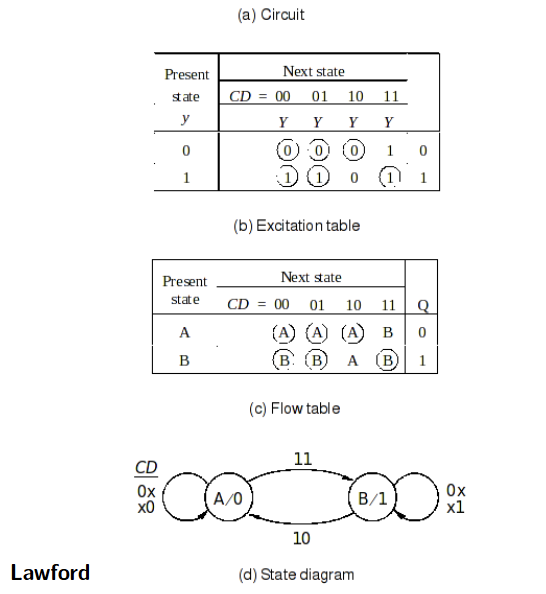Slide 9 - Asynchronous Sequential Circuits
1/19
There's no tags or description
Looks like no tags are added yet.
Name | Mastery | Learn | Test | Matching | Spaced |
|---|
No study sessions yet.
20 Terms
Asynchronous Input
input changes at any time,
eg pushbutton inputs, output driven by a circuit with a different clock
Problems
propagation delay can cause signals to be interpreted as different values in different parts of the circuit
Asynchronous input may violate setup and hold times of flip flop
Synchronized Input
change occur after active clock edge
Synchronizing Inputs Idea
put asynchronous input x, through a synchronizer
if they were connected directly, propagation delays could cause Q1 and Q2 to have different latch value

Metastability and Synchronizer
when FF set up times and hold times are violated for synchronizer
Flip flop may enter metastable state, where logic value is neither 1 or 0
will eventually resettle to either 1 or 0 after time
only way to guaranteed way to recover is to reset the entire circuit
Reducing Metastability Problems in Synchronizer
use faster FF with smaller Set up times and hold times
reducing the vulnerable time window
Lengthening the system clock period, or sampling the input at a lower frequency (reduces number of vulnerable time windows)
Using a 2 bit shift register as synchronizer, if first FF is metastable state, will usually settle by the time it gets to the next active clock edge
introduced a delay of one clock period on input

A/S sequential Circuits
general model; inputs and current state are used by combinational circuits to compute outputs and next state
after time delay, ∆, the next state becomes the current state
for a synchronous circuit, ∆=clck period
Synchronous circuits assume that input do not change to close to active clock edge
for a asynchronous circuit ∆=total propagation delay
Assume;
only 1 input changes at a time
input changes occur sufficiently far apart to allow the circuit to reach a stable state before the next change
Stable state is a state the asynchronous circuit will stay in once reached, until another input changes

Advantages of Asynchronous Sequential Circuits
Speed; no clock involved, speed only depends on propagation delays
Flexibility: different parts of an asynchronous system can operate at different speeds, but in a synchronous system, the clk frequency has to accommodate slowest part
Power Usage; distributing clock signal to all parts adds to power usage up to 30-40%, for a high performance circuit
Disadvantages of Asynchronous Sequential Circuits
Design complexity; difficult to design, and limited tool support
Glitches; race conditions, glitches can cause problems if circuits not carefully design
Flow Table
state table of an Asynchronous circuit
a state in a state table is stable for particular set of inputs when the next state = current state
the state is unstable, we circle them in the flow table
Excitation Table
state assgigned table of a Asynchronous Circuits
S-R latch as a Asynchronous Circuit
cut the feedback loop and insert a delay elements
creates a time delay of ∆ (equal to the combined propagation delay of the two NOR gates)
treat the NOR gates as ideal, no delay
let y be the input, Y be the next state
after delay of ∆ y is assigned value of Y

Excitation Table for SR latch as an Asynch Sequential

ASYNCHRONOU CIRCUITS HAVE NO RESET

Dp this Example

Race Conditions
when two bits of the presents state change during the next state
requires both buts to change at the same time, but because the circuit is not ideal it won’t
correct outcome depends on which variable changes first
to prevent treat state variable like inputs to circuits, allow only one to change a time )grey code)
Hazards
In a asynchronous sequential circuit, you want to avoid glitches on signals
a glitch is when a signal temporarily takes on the wrong value
Static Hazards
when a signal is NOT supposed to change it’s value, but momentarily does
change to input often has more than one propagation to an output
when one path has a longer prop. delay we may find static hazard
Examine k-maps, when two adjacent 1 (0) are not covered by the same term, there may be hazard

Dynamic Hazard
when a signal is supposed to change value, but there is a small oscillation
you can’t have a dynamic hazard, without static hazard

Prove Static Hazard
Analyze like normal circuit, ignoring the fedback
K-map will show it might have hazard, and where to look for hazard
must draw a timing diagram with delay to show existence
Dynamic Hazards
caused by a circuit with more than two levels, where changes to an input have more than one path to propagate along
to avoid dynamic hazards, design two-level circuit with no static hazards